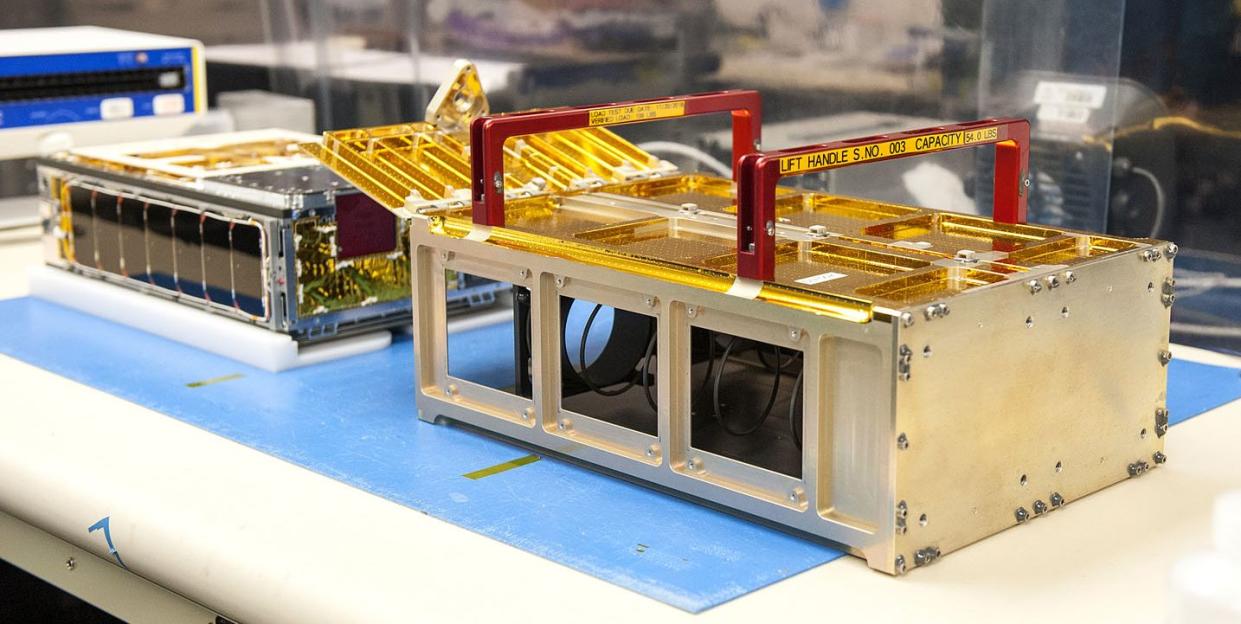NASA Has Lost Contact With Its Ambitious CubeSat Asteria

NASA's tiny, modular Asteria satellite has lost contact after completing its primary mission and three mission extensions.
Asteria is part of NASA's ambitious CubeSat project, using privately made parts that interlock.
This mission is considered a success and evidence that small satellites are feasible even in outer space.
NASA has lost touch with a tiny satellite named Asteria, but there’s a small likelihood they could still reestablish contact. Asteria is part of the astrophysics arm of NASA’s overall small satellite program called CubeSat. Along with the other CubeSat satellites, Asteria “is only slightly larger than a box of cereal,” NASA says.
Its primary mission lasted just three months and was completed by February 2018. NASA says Asteria’s three mission extensions to date have gathered more useful data and helped them show that a tiny satellite can fill a niche in NASA’s satellite repertoire.
Asteria has looked for exoplanets using a technique called the transit method, where we record progressive images of a specific star in order to notice if shadows are crossing it. These shadows indicate that something is traveling (“in transit”) between our telescope and the star. The size and type of shadow can help us understand the size and nature of what we see. Many exoplanets, including “Earth-like” ones, are discovered this way.
NASA’s CubeSat program challenges researchers to make small satellites out of modular units that are about 4 inches cubed. Asteria is made of six of these units. Its optical unit is small enough to sit comfortably in a cupped pair of hands. CubeSat itself is a nonprofit initiative designed to offer low-cost satellite technology to researchers and their students at universities around the world, for whom access to low-Earth orbit is cheaper and more plentiful than ever before. Because a final CubeSat product is made of standardized units, dozens of manufacturers make compatible parts and components. The CubeSat website lists over a dozen services to deliver units to space.
But Asteria is unique among other CubeSats.
“Many orbiting small satellites can take higher-quality pictures of Earth than this one,” scientists reported for NASA. “But ASTERIA is the only CubeSat in orbit that can also look for exoplanets, or planets orbiting stars other than our Sun.”
For communications, Asteria has two antennas—redundant in case one breaks down, but perhaps now both have broken down—and these both send and receive communications, referred to as “duplexed” in telecom and network hardware. Command messages are transmitted to Asteria from a special, 21-meter antenna in Kentucky.
The antennas could both be impaired, but there are many other potential explanations. Asteria’s communications system can’t reboot itself and relies on the satellite’s flight software to reboot it if needed. If something has gone wrong within that process, the antennas are sitting ducks. But NASA seems happy with the progress Asteria made during its primary mission of three months and its extended missions in the nearly two years since. They’ll continue trying to contact Asteria until March.
You Might Also Like

